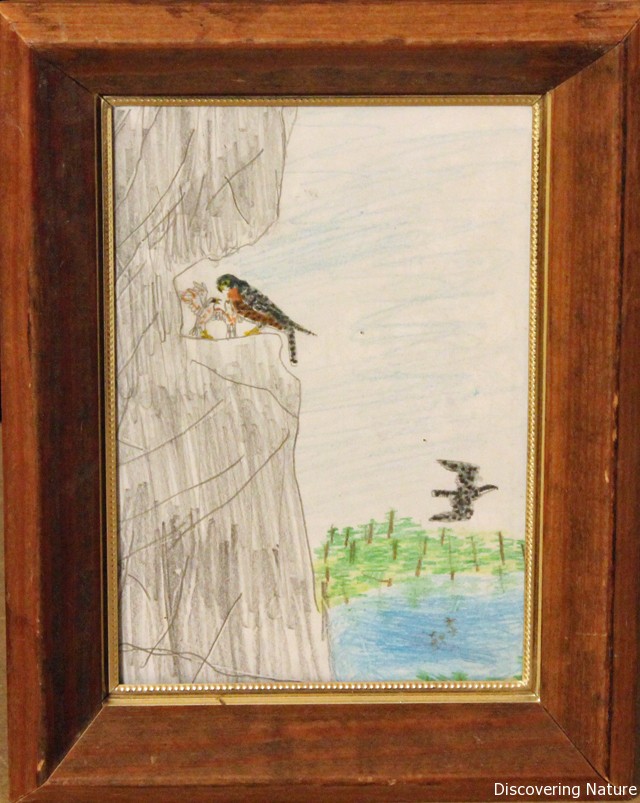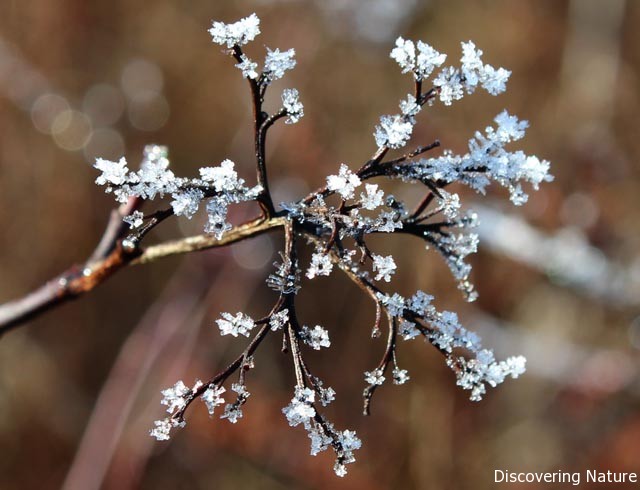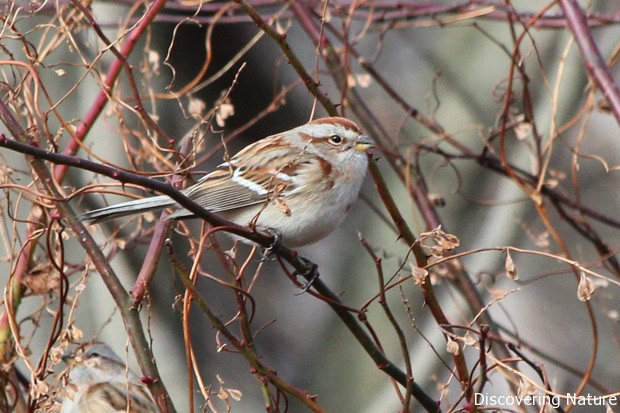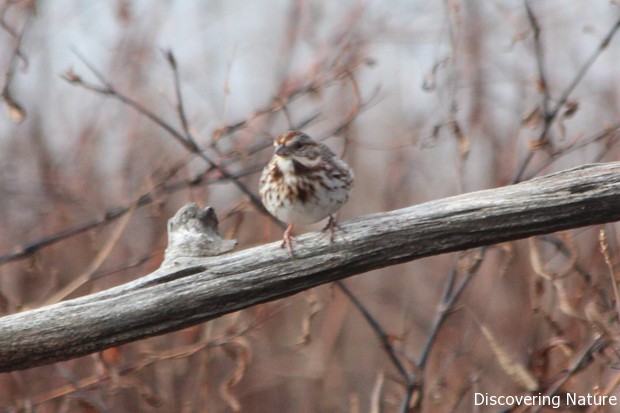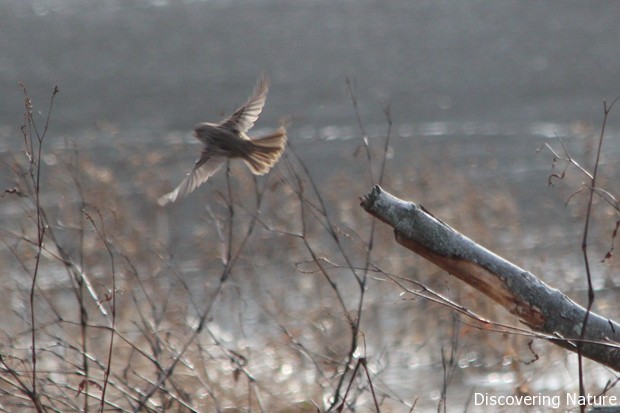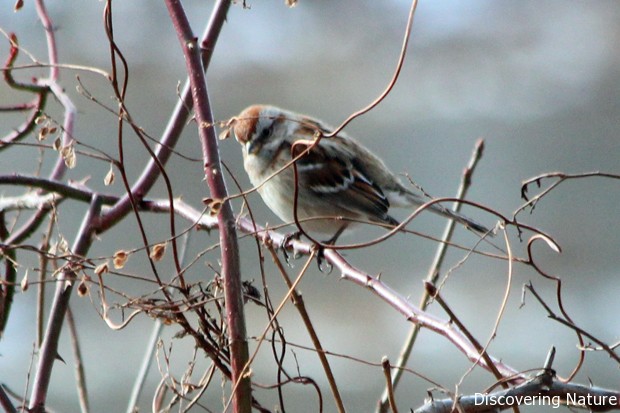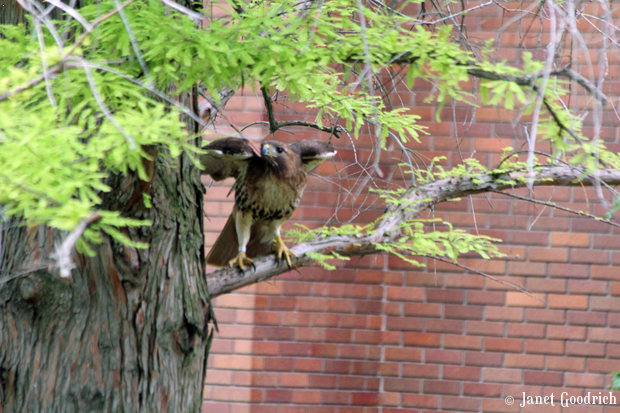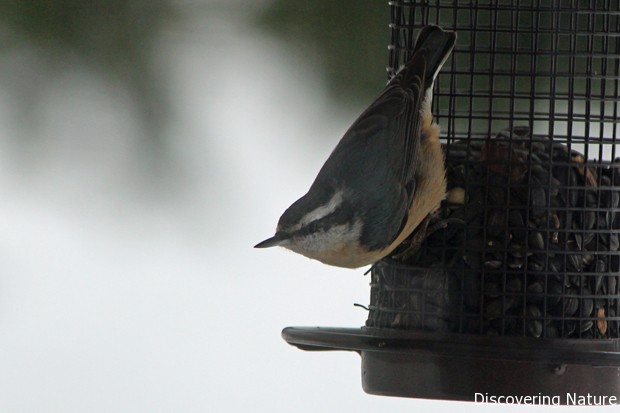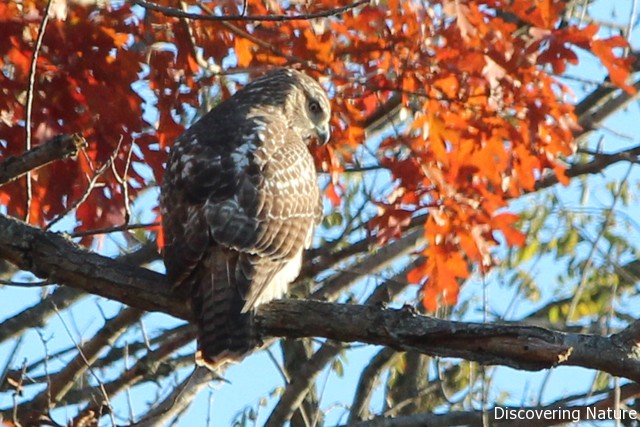Plain Brown Packages
The girls and I took a walk at the local pond where we saw the redtail a month or so ago. He flew by a short distance from us but didn’t put on a show like he did last time. But it was fun to see (and hear) a flock of tree sparrows peeping as they fed in the bushes accompanied by goldfinches, cardinals and white-throated sparrows. The bushes were full of rustlings and twitterings, and the white-throated sparrows were in top form flipping over leaves on the forest floor.
Sparrows are thought of as plain birds, but seen up close they never fail to win my admiration. These tree sparrows have such a beautiful combination of browns and golds. They seem like flying chipmunks. I never noticed the yellow on the lower part of their beaks before.
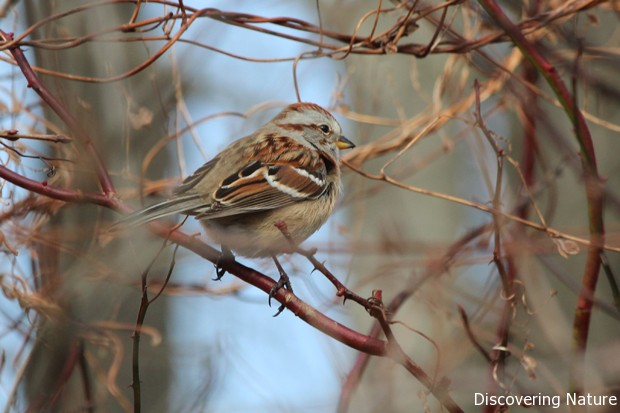 There was a song sparrow too, in the same place I’ve seen her before.
There was a song sparrow too, in the same place I’ve seen her before.
Not far away was some fresh beaver work. Younger Daughter was convinced we’d startled the beaver because the tree “had spit on it.” 🙂
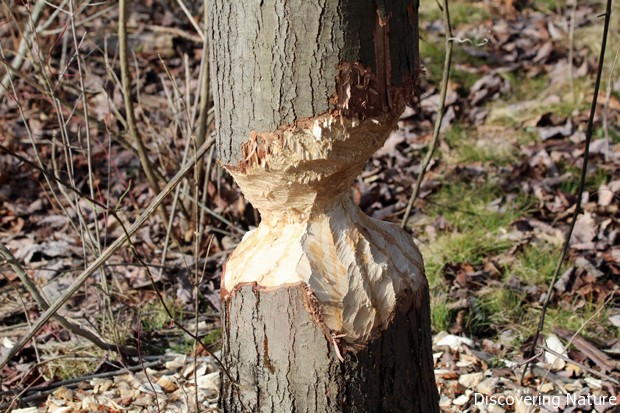 There are two large beaver lodges on the pond, as well as a number of muskrat homes. This lodge seemed to be where the numerous saplings and bush stems the beavers has nipped off were being taken.
There are two large beaver lodges on the pond, as well as a number of muskrat homes. This lodge seemed to be where the numerous saplings and bush stems the beavers has nipped off were being taken.
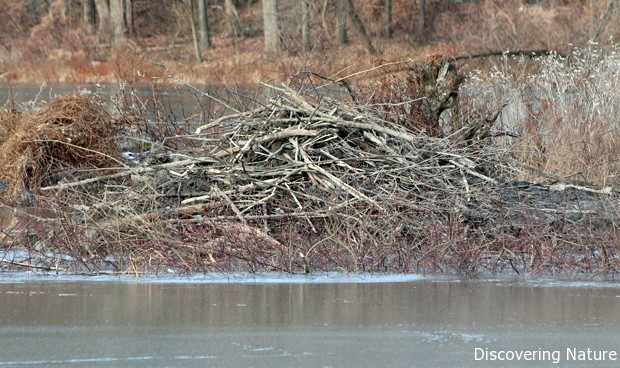 It was cold, but we enjoyed seeing these reminders of creatures busy about the work of survival. It almost seemed like they enjoyed seeing us too. We certainly gave the birds something to gossip about.
It was cold, but we enjoyed seeing these reminders of creatures busy about the work of survival. It almost seemed like they enjoyed seeing us too. We certainly gave the birds something to gossip about.
“Dotty the Tree Sparrow spends the winter here. He left for his home in the Far North about the time you took it into your head to wake up.”
“Why do you call him Dotty?” asked Johnny Chuck.
“Because he has a little round black dot right in the middle of his breast,” replied Peter. “I don’t know why they call him Tree Sparrow; he doesn’t spend his time in the trees the way Chippy does, but I see him much oftener in low bushes or on the ground. I think Chippy has much more right to the name of Tree Sparrow than Dotty has. Now I think of it, I’ve heard Dotty called the Winter Chippy.”
“Gracious, what a mix-up!” exclaimed Johnny Chuck. “With Chippy being called a Tree Sparrow and a Tree Sparrow called Chippy, I should think folks would get all tangled up.”
“Perhaps they would,” replied Peter, “if both were here at the same time, but Chippy comes just as Dotty goes, and Dotty comes as Chippy goes. That’s a pretty good arrangement, especially as they look very much alike, excepting that Dotty is quite a little bigger than Chippy and always has that black dot, which Chippy does not have. Goodness gracious, it is time I was back in the dear Old Briar-patch! Good-by, Johnny Chuck.”
(Thornton W. Burgess, Burgess Bird Book, chapter 4)
